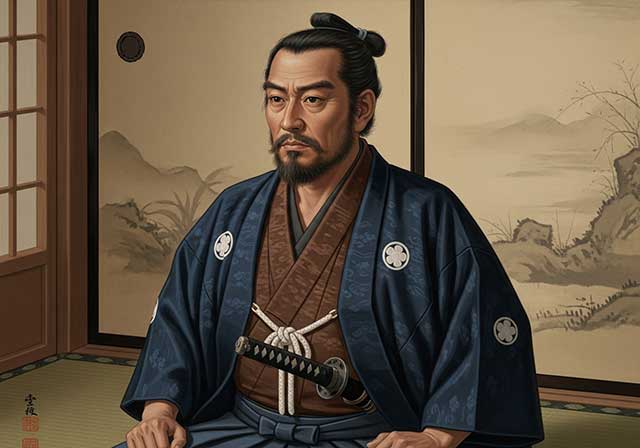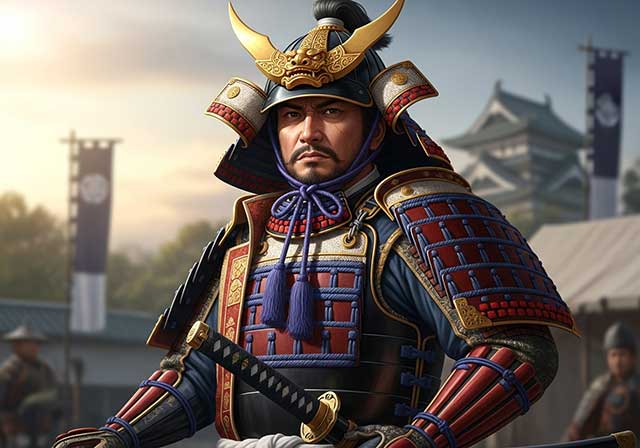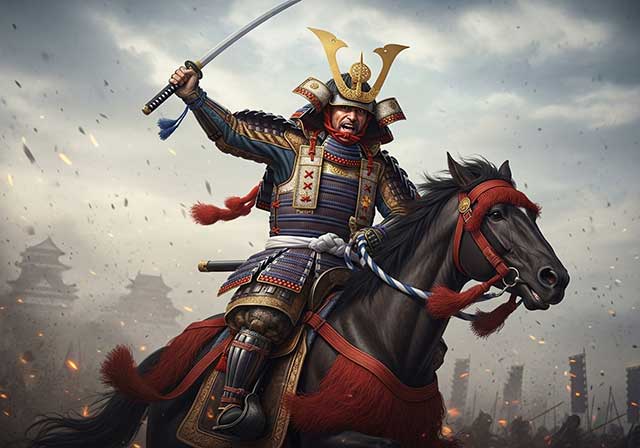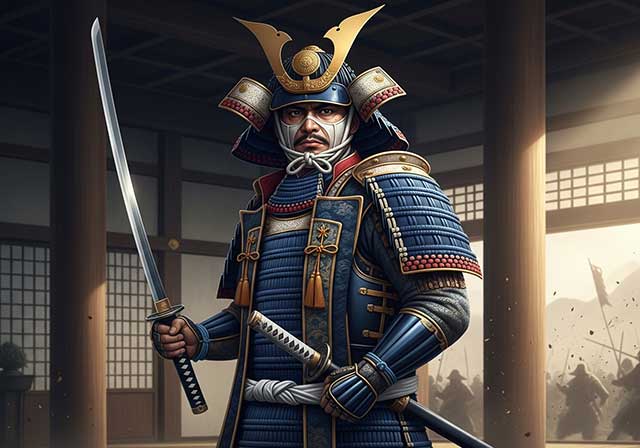
At the age of 15, Hosokawa Tadaoki engaged in his first battle under the command of Oda Nobunaga. In 1580, he was granted the Tango domain in present-day northern Kyoto Prefecture and entered into an arranged marriage with the daughter of Akechi Mitsuhide, another trusted general of Oda Nobunaga.
This strategic union aimed to fortify the bonds among Oda's vassals. However, when Mitsuhide betrayed and killed Nobunaga in the Honnoji Incident, seeking aid from Tadaoki and his father Fujitaka, both refused to assist. Tadaoki later fought alongside Toyotomi Hideyoshi in the Battle of Komaki Nagakute in 1584 and participated in the Siege of Odawara against the Hojo Clan in 1590.
Renowned for his literary and poetic prowess, Tadaoki, like his father Yusai, was a skilled practitioner of the tea ceremony, having studied under the esteemed tea master Sen no Rikyu. Despite his proficiency in cultured pursuits, Tadaoki was known for his formidable temper.
In 1600, leading up to the Battle of Sekigahara, Tadaoki and his father aligned with the Tokugawa, driven in part by the Western forces' attempt to take Tadaoki's wife, Gracia, hostage, resulting in her tragic death during an attack on their mansion by Ishida Mitsunari's forces. Tadaoki's father defended Tanabe Castle against a substantial Western force, preventing them from joining the main conflict at Sekigahara.
Commanding a force of 5,000 samurai at Sekigahara, Tadaoki engaged in intense hand-to-hand combat, directly clashing with Shima Sakon's troops near the Toyotomi Loyalists' base on Mt Sasao. Post-Sekigahara, Tadaoki received land in Kokura and participated in the Sieges of Osaka in 1614 and 1615 before retiring in 1620. He passed away at the age of 82 and was laid to rest at Kyoto's Daitoku-ji Temple, beside his wife, Gracia. Following her death, he remained single for 46 years.
See also
Hōjō Nagaudji was one of the prominent military commanders of the late Muromachi period. Thanks to a successful marriage alliance and skillful use of political intrigue, he managed to concentrate full power over the provinces of Suruga, Izu, and Sagami in his own hands. His origins remain unclear, but there is a possibility that he was connected to the Heiji clan of Ise Province, since early in his life he bore the name Ise Shinkurō. From an early age, Hirano Nagayasu was in the service of Toyotomi Hideyoshi, since Nagayasu’s father, Nagaharu, had faithfully served Hideyoshi during Hideyoshi’s own childhood. Thus, the connection between the Hirano family and the Toyotomi house was established long before Hideyoshi’s rise to power and took the form of hereditary vassal loyalty. Hattori Hanzō, also known by the name Hattori Masanari, was the third son of Hattori Yasunaga, a samurai who served the Matsudaira clan. In his childhood he was called Tigachi Hanzō. His father held the highest rank in the shinobi hierarchy, that of jōnin, and Hanzō followed in his father’s footsteps, choosing the same path. Hatano Hideharu was the eldest son of Hatano Harumichi, the head of the Hatano clan. However, in childhood he was adopted by his uncle, Hatano Motohide, and was therefore formally regarded as Motohide’s heir. From the time of Hideharu’s grandfather, Hatano Tanemichi, the Hatano clan had been a vassal of the powerful Miyoshi house, which exerted considerable influence over the Ashikaga shoguns and effectively shaped the political situation in the region. Early in his career, Hideharu served Miyoshi Nagayoshi and, judging by surviving records, held a fairly high position within his lord’s hierarchy, as he was among the select group invited to the enthronement ceremony of Emperor Ōgimachi in 1557. Fukushima Masanori, a samurai from Owari Province, served Toyotomi Hideyoshi and took part in the Battle of Shizugatake, where he distinguished himself so conspicuously that he was awarded the honorary title of one of the “Seven Spears of Shizugatake,” meaning the warriors who had shown the greatest valor in the battle. As a reward for his courage and martial prowess, he was granted land producing an income of 5,000 koku of rice. Masakatsu was a member of the Uemura clan and the son of Uemura Masatada; from an early age he served Tokugawa Ieyasu. During the Ikkō-ikki uprising in Mikawa Province in 1563, having converted from the Jōdo Shinshū Buddhist sect to the Jōdoshū sect, he took part in suppressing the rebels. After these events, Masakatsu was appointed a military governor and was granted land holdings. According to a number of sources, he was one of the so-called “Three Governors of Mikawa” (Mikawa sanbugyō), together with Amano Yasukage (1537–1613) and Koriki Kiyonaga (1530–1608). Gozen is regarded as one of the few historically documented examples of true female warriors of feudal Japan, known as onna-musha or onna-bugeisha. Although Japanese history records countless women who at various times were forced to take up arms—for example, in defense of their castles—Tomoe Gozen was, without any doubt, a genuinely skilled and accomplished fighter. She was the wife of Kiso (Minamoto) Yoshinaka, although The Tale of the Heike describes her more as a female vassal. Yoshinaka rose in rebellion against the Taira clan and, in 1184, captured Kyoto after his victory at the Battle of Kurikawa. After the Taira were driven into the western provinces, Yoshinaka began insistently asserting that he alone was worthy of assuming leadership of the Minamoto clan and taking on the mantle of its head. Tachibana Muneshige was born the eldest son of Takahashi Shigetane, one of the principal retainers of the Ōtomo clan and commander of Iwaya Castle. In childhood, he bore the name Senkumamaru. His early years coincided with a period of intense military confrontation between the Ōtomo clan and other powerful warrior houses of Kyūshū—namely the Shimazu, Akizuki, and Ryūzōji clans.
Hojo Soun

Hirano Nagayasu

Hattori Hanzo

Hatano Hideharu

Fukushima Masanori

Uemura Masakatsu

Tomoe Gozen

Tachibana Muneshige


